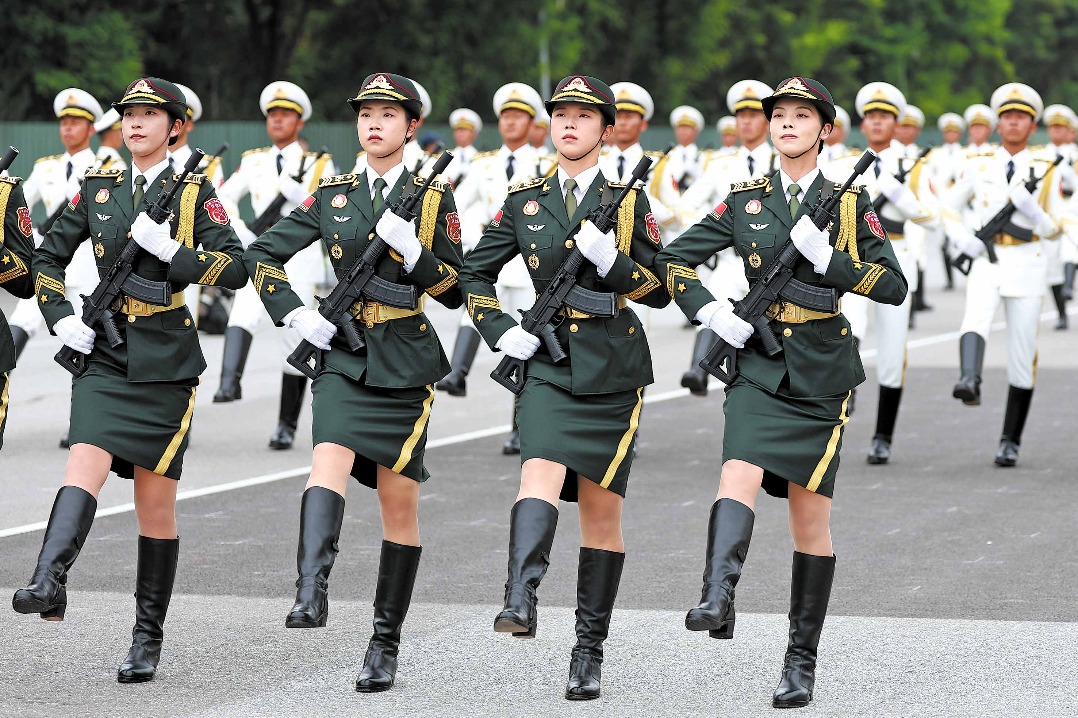Navigating China's post-congress economy

BEIJING - For those who gauge the growth trajectory of China's economy over the next five years, meaningful hints could be found at the ongoing twice-a-decade Communist Party congress.
When outlining the development objectives for the next five years in his report to the 19th National Congress of the Communist Party of China (CPC), Xi Jinping said China's economy has been transitioning from a phase of rapid growth to a stage of high-quality development.
China will not close its door to the world. It will only become more and more open, according to the report.
With China becoming a global China, that ups the ante on its connection to an increasingly integrated world and creates a new set of opportunities.
Since the 18th CPC National Congress in 2012, China's economy expanded by an average annual rate of 7.2 percent (2013 - 2016), outstripping the 2.6-percent average global growth and the 4-percent growth of developing economies.
"The economy has maintained a medium-high growth rate, making China a leader among the major economies," according to the report.
The report called it a pivotal stage for a transforming growth model, improving economic structure, and fostering new drivers of growth.
China needs a transformative leadership to move the country forward, to have the system evolve in a way that's right for a new era. That means strengthening institutions and human capital while changing the structure of the economy, said Yukon Huang, a senior fellow at Carnegie Endowment for International Peace.
Wang Xiaodong, governor of Central China's Hubei province, a delegate to the congress, was greatly encouraged by the report.
"As one of the country's old industrial bases, Hubei is at the frontline of the growth model transformation," he said.
To reduce excess steel capacity and improve market competitiveness, Wuhan Iron and Steel, a mega steel maker based in Hubei, merged with Shanghai-based Baosteel in 2016.
In 2016 alone, Hubei completed the capacity reduction goal for the next three years. However, its annual economic growth rate still beat national average.
"Economic restructuring is the only way to achieve more sustainable, balanced and high-quality growth in the next five years. We should waste no effort to achieve that," Wang said.
The report underlined the importance of boosting consumer spending as it should play a fundamental role in the national economy.
Hubei Bank Corporation Ltd, a small-sized lender in the province, has been focusing on extending consumer credit over the past years due to strong market demand.
"The growth rate of consumer credit is amazing. Although it accounts for a small share of our total lending, it will grow very fast in the future," said Zhou Yukun, Party secretary of Hubei Bank Corporation Ltd. and a delegate to the congress.
Wang Tao, chief economist with UBS China, estimated consumption will grow at an annual rate of 7 percent at least in the next two years thanks to rising incomes and demands for high-quality living.
In 2016, consumption accounted for nearly 54 percent of China's GDP. Wang estimated that by the end of 2020, the proportion will rise by 2 to 3 percentage points.
According to the report, China will implement the system of pre-establishment national treatment plus a negative list across the board. It will also significantly ease market access and protect the legitimate rights and interests of foreign investors.
Over the past decades, China has transformed from a closed to an open economy that has become the world's top exporter and second largest importer and ODI source.
Currently, as protectionism rears its head in the west, China looks to greater liberalization of trade and investment for shared prosperity.
By linking countries and regions that account for more than 60 percent of the world's population and 30 percent of global GDP, the Belt and Road Initiative is a "perfect example" of China sharing its wisdom and solutions for global growth and governance, said Robert Lawrence Kuhn, chairman of the Kuhn Foundation, an American non-governmental organization promoting China-US ties.
The IMF recently raised its forecast for China's economic growth in 2017 and 2018 to 6.8 percent and 6.5 percent respectively, both higher than the earlier forecast in July.
For an economy with a total volume of over $11 trillion, maintaining such high growth is not easy, Chinese Vice-Minister of Finance Zhu Guangyao said. The upward revision is a "strong affirmation" of the Chinese government's achievements in supply-side structural reforms by the IMF, he said.
- US' 'freedom of navigation' based on self-interests, report says
- Water nourishes Xinjiang: Survival code of oasis civilizations
- Researchers develop hybrid downscaling model for high-resolution daily rainfall estimation
- First ultra-zero carbon facility debuts
- China's use of digital, AI tools praised by intl body
- Experts defend sea sovereignty




































